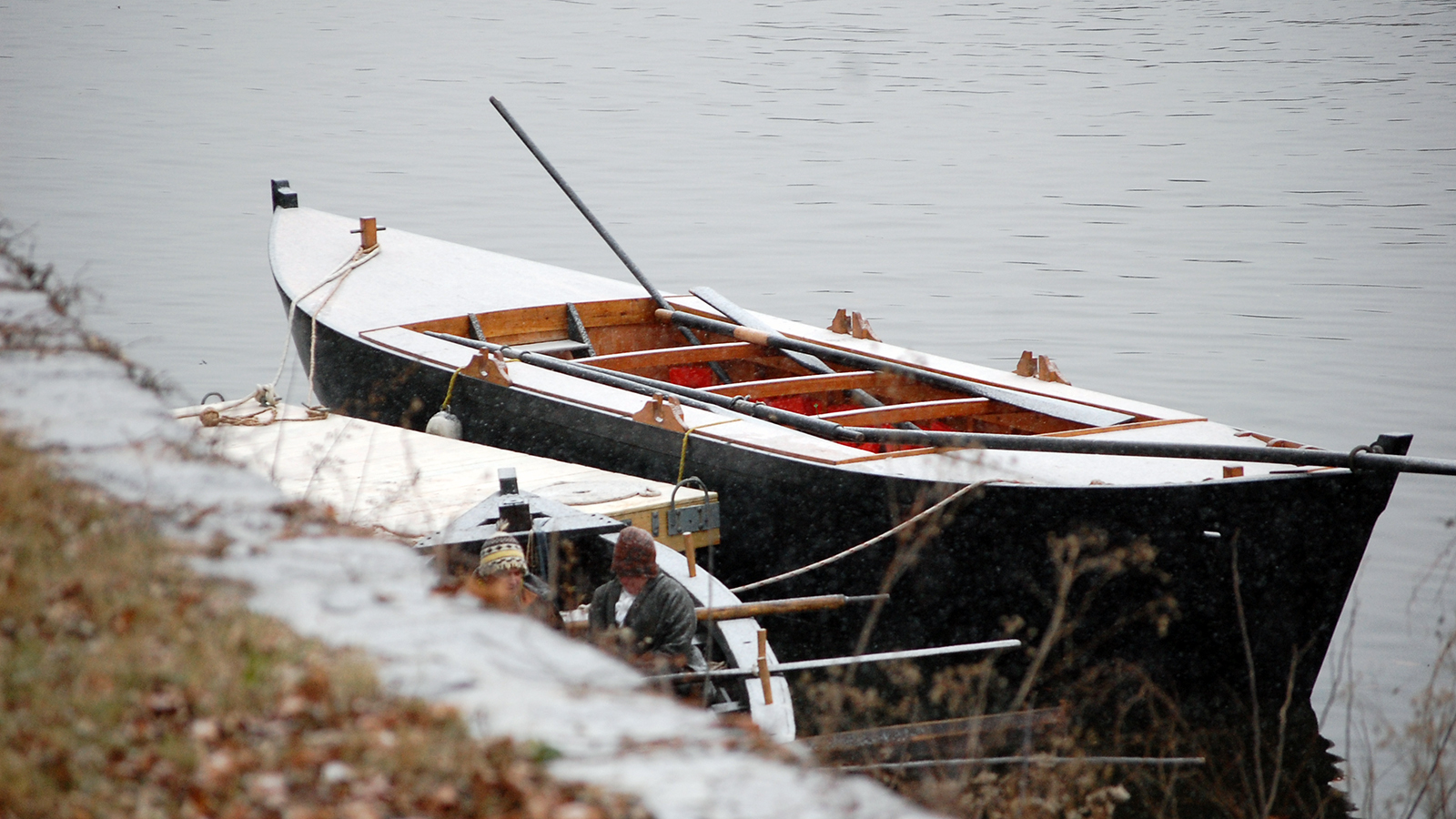
When you consider all that General George Washington and his men endured in crossing the Delaware on Christmas night 1776, it’s easy to gloss over the logistics, including their watercraft.
But it took many boats to move the soldiers from one side of the river to the other: roughly 20 Durham boats in all, and untold numbers of other kinds.
The History of Durham Boats
The first Durham boat is believed to have been built around 1730. At its height, “there was a fleet of a thousand Durham boats on the Delaware giving employment to several thousand men whose job it was to move cargo down the river to Bristol and Philadelphia,” according to the Durham Historical Society.
Its design made the boat well suited for such work – and for transporting thousands across the river. A Durham boat was 60 feet long, six feet wide, and three feet deep. Flat-bottomed and pointed at both ends, they were propelled along the shoreline by planting steel-tipped poles into the riverbed. Oars were used in the deeper water at the center of the river.
While the trip upriver was undoubtedly more difficult, Kimberly McCarty, the park’s curator, says they were designed to travel in both directions. Both the front and stern were shaped into a sharp angle.
Durham Boats on the Delaware River
It appears Durham boats were integral to an earlier crossing. In the middle of the Continental Army’s retreat across New Jersey, Washington plotted his next move: escape into Pennsylvania.
On December 1, 1776, while camped in New Brunswick, NJ, Washington wrote to Continental Army Colonel Richard Humpton with the following orders:
You are to proceed to the two ferry’s near Trentown and to see all the boats there put in the best order with a sufficiency of oars and poles and at the same time to collect all the additional boats you [can] from both above and below and have them brought to those ferry’s and secured for the purpose of carrying over the troops in most expeditious manner … You will particularly attend to the Durham boats which are very proper for the purpose.
In the same letter, Washington ordered Humpton to make sure that all of the boats, especially the Durham boats, were secured and out of sight of the British army once Washington and his troops had crossed the Delaware to Pennsylvania. That same day, Washington wrote to New Jersey Governor William Livingston with a similar request.
It’s fairly safe to assume the landings around Trenton were well-populated with Durham boats in December 1776. It’s also safe to assume that the army, upon receiving word from Washington, took the boats they found. Or, as McCarty describes it: “conscripted them into service of the cause.”
With his troops safely camped in Pennsylvania and the boats that brought them there hidden from the British army, Washington began to put his plans in motion for the Christmas night crossing. On December 19, Major General Nathanael Greene wrote the following to General James Ewing:
I am directed by his excellency George Washington to desire you to send down to Meconkea ferry, sixteen Durham boats & four flats. (McCarty believes “flats” could refer to ferries.) Youl send them down as soon as possible.

